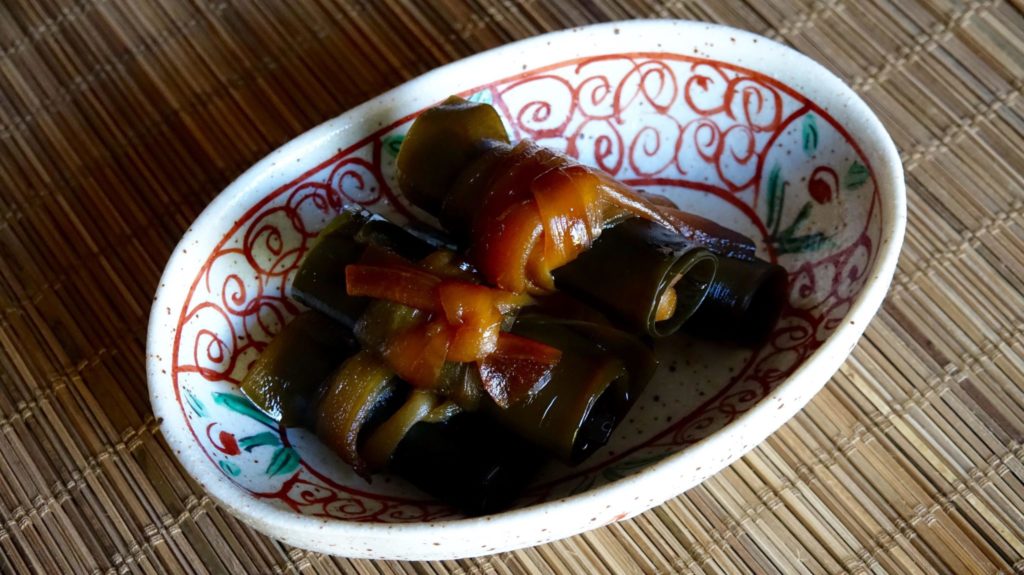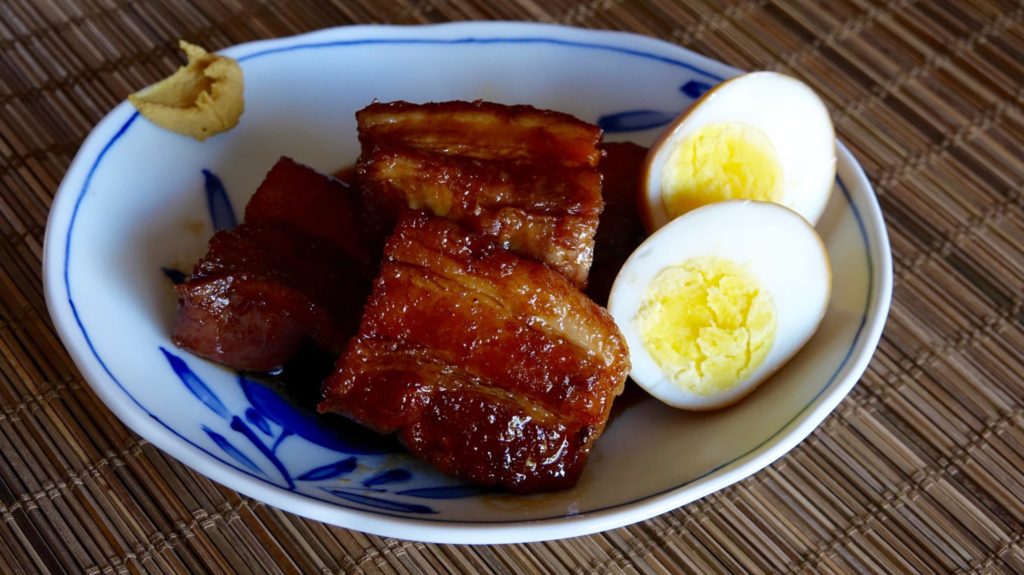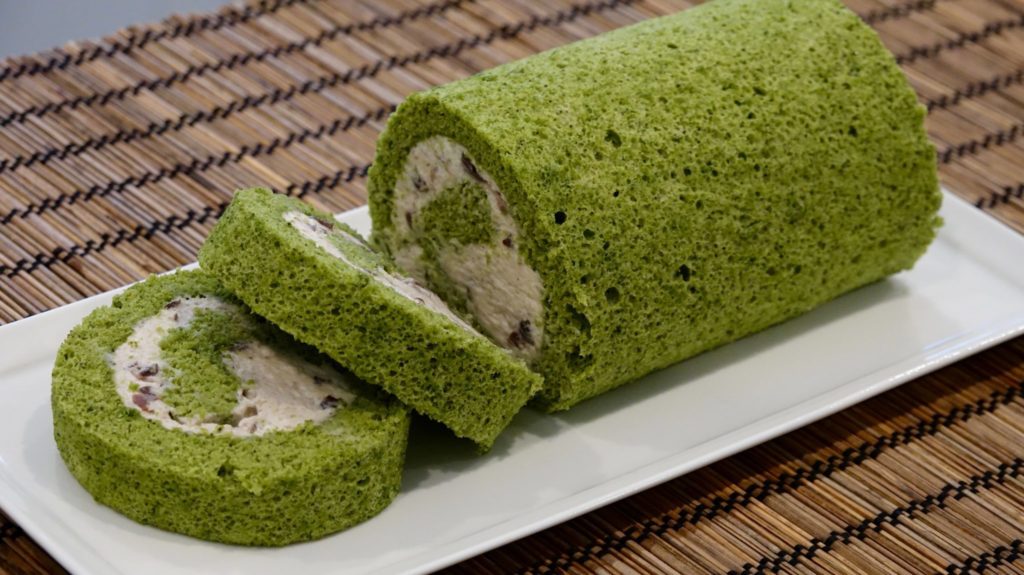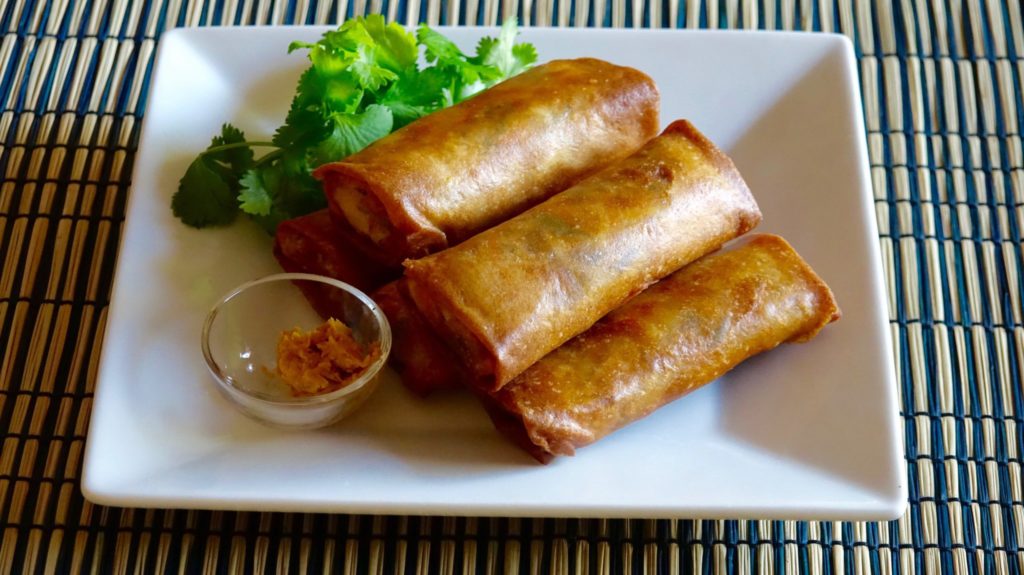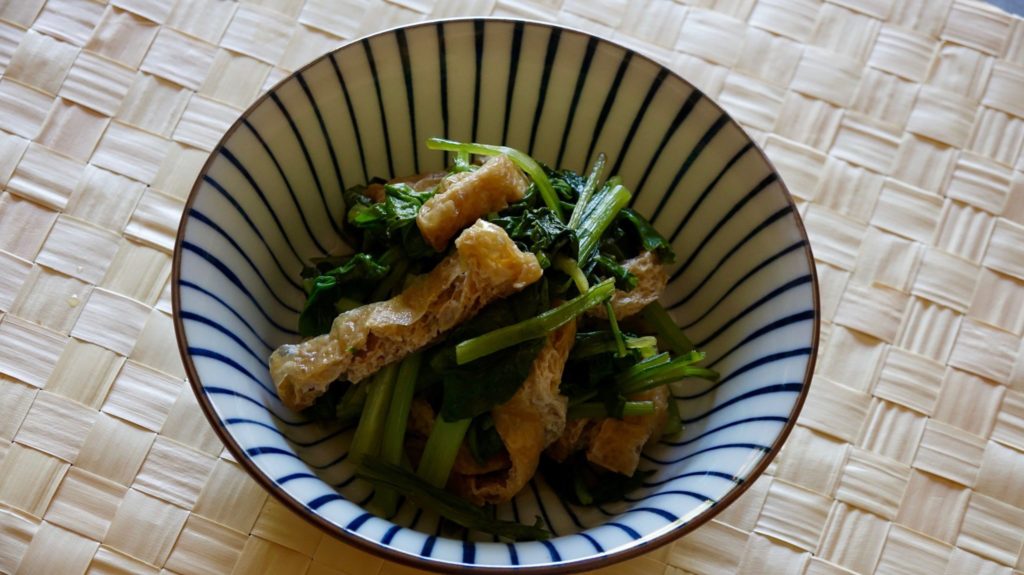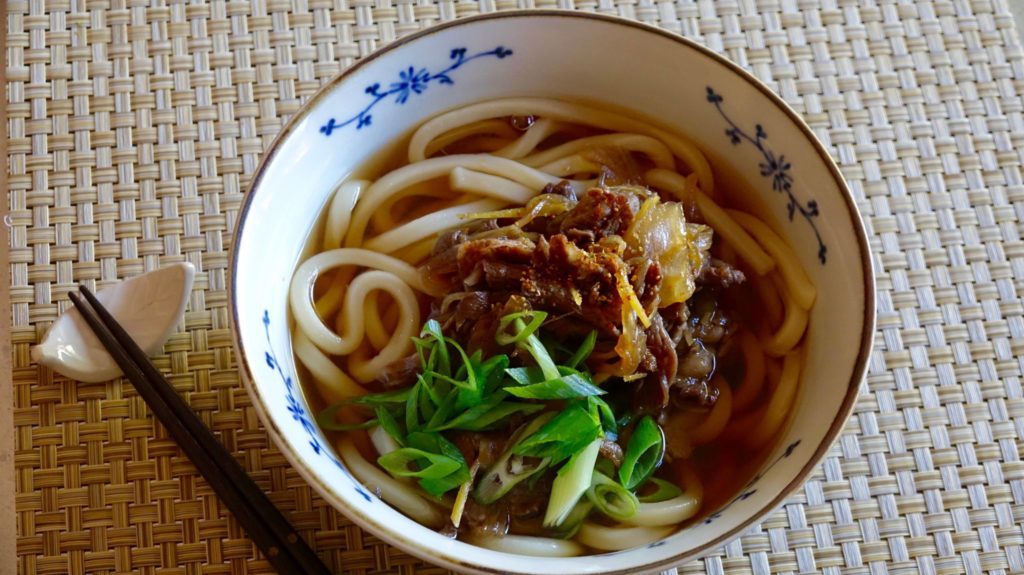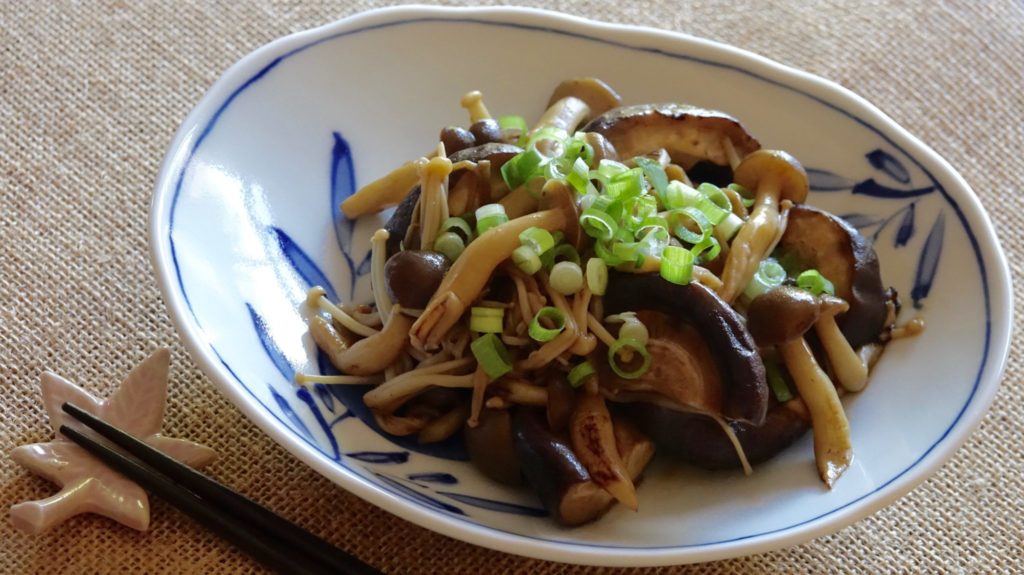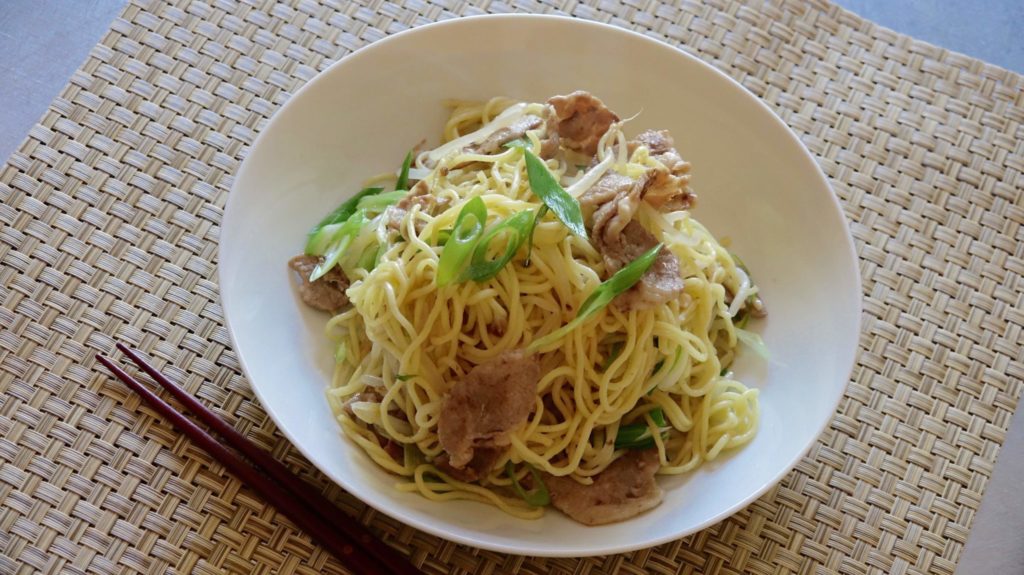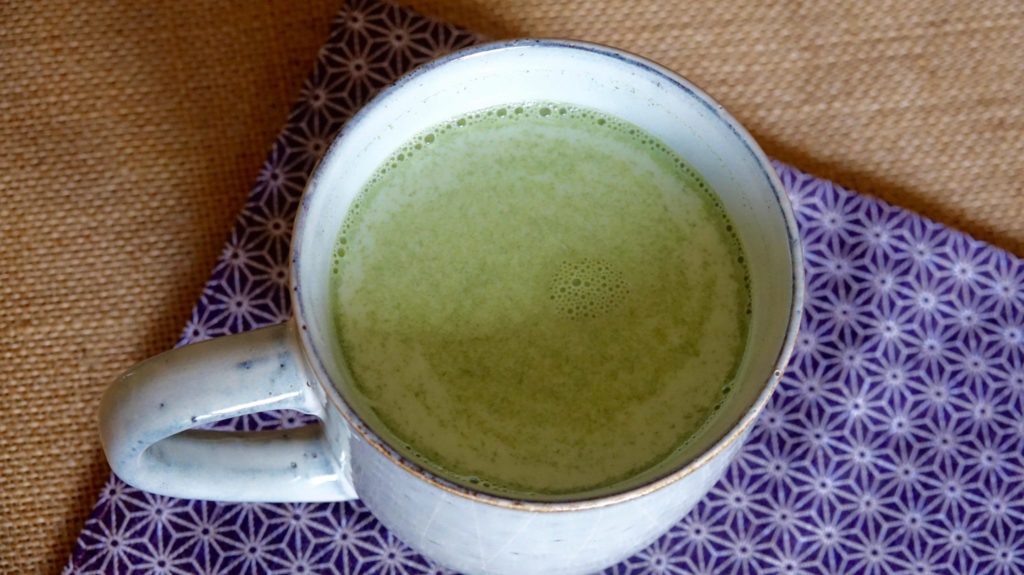Kobumaki is Japanese rolled Konbu (sea kelp; also spelled “Kombu”) cooked in a sweet and salty sauce. It is a part of Osechi Ryori, the Japanese traditional new year feast. There are a lot of kinds of Osechi dishes, but Kobumaki is one of the most traditional and important dishes, and it is almost always included in it. Like many other dishes in Osechi, Kobumaki is seasoned strongly to be able to last for several days during the Japanese holiday season.
Kakuni is braised pork belly cooked and flavored strongly with Soy Sauce and sugar. It is not a traditional Japanese dish to put in Osechi Ryori (New Year feast), but a lot of people today enjoy Kakuni in their Osechi as well as many other occasions.
Matcha Roll Cake (抹茶ロールケーキ) is Matcha flavored sponge cake rolled with Anko (sweet red bean) whipped cream. This western style dessert has traditional Japanese flavors, however, it is light enough to be a perfect ending after any kind of meal.
Matcha is a kind of green tea that is in a powdered form, traditionally used for the Japanese tea ceremony, and it is different from regular green tea leaves. Matcha tastes rather strong and bitter by itself, but its refreshing flavor goes very well with dairy and sugar. It is an excellent complement to baked goods especially, leaving no bitterness but a nice fragrance. Matcha has become a common flavor for many drinks and desserts in the US too, such as Matcha Ice Cream and Matcha Latte that you may have seen before. The cream inside this cake is flavored with Anko which is another very authentic component for Japanese desserts. By mixing with whipped cream, Anko becomes a milder taste so that two big flavors don’t crush each other.
Buta Kimchi is stir-fried pork and Kimchi, chili pickled nappa cabbage. This spicy dish is popular in Japan at Izakaya (bars which serve a lot of small appetizers with drinks) and also at home as a quick and easy appetizer.
Harumaki (or spring roll actually in Japanese) are deep-fried egg rolls which are known well in Chinese cuisine in the US. Many people who are not familiar with much Japanese food may even have had Harumaki at some point of life. Harumaki is also a popular Chinese dish in Japan, similar to Gyoza dumplings. You can find Harumaki at Chinese restaurants over there, of course, but it’s also a very common home-made food Japanese moms make for dinner. If you only know them from restaurants, this is way better than that (hopefully!), and it is worth trying at home.
Komatsuna Nibitashi is a quintessential Japanese side dish. It is light, healthy, and subtly flavored, and can go with any entree and steamed rice. You don’t see this traditional but easy dish very often at Japanese restaurants in the US, but it is very typical Japanese food made and eaten at home.
Niku Udon is Udon noodle soup with beef (Niku=meat), but don’t let the name deceive you. It is not just throwing sliced beef into the soup, but there is more to it. The beef topping, to be placed on regular Udon noodle soup, is cooked in sweet and salty seasonings and punched up with ginger. This beef could even be a wonderful dish without Udon. Niku Udon looks quite simple and, in fact, it is not so hard to make, but the flavor combination of noodles, soup, and the cooked meat is surprisingly but intentionally complicated and delicious.
There are a lot of kinds of mushrooms in Japanese cuisine, but here we have a dish using the three most easily accessible ones: Shiitake, Shimeji, and Enoiki (Enokitake). This Sauteed Mushrooms with Soy Butter Sauce is a wonderful side dish to any kind of entree, even non-Japanese food. And also this mushroom dish will bring the taste of fall to your tabl
Yakisoba is stir-fried egg noodles with roots in Chinese Chow Mien, although it has evolved on its own path over a long time. Japanese Yakisoba is better known to be seasoned with a Worcestershire Sauce-like Yakisoba sauce. However, there is another popular kind: Shio Yakisoba. “Shio” means salt in Japanese, and salt is of course used in Shio Yakisoba along with other seasonings, but the name “Shio Yakisoba” is used to differentiate from “sauce” Yakisoba. Shio Yakisoba is less rich and strong flavored compared to the other kind, but it is quite tasty and possibly more habit forming for its simpler taste.
Having lived in Kansai areas where Okonomiyaki is famous (which uses a sauce similar to Yakisoba sauce), Yakisoba with sauce is a more typical and familiar kind – or even the only kind – for us. But, there are a lot of different versions of Yakisoba and Shio Yakisoba all over Japan. Many regions have created their own Shio Yakisoba using local seafood and vegetables, but it seems like the dish is gaining more attention nationally in the last decade or so. When you make it at home, because there are so many varieties, there is no right or wrong for what ingredients to use. We wanted it to be very simple here and used only a few things – pork, bean sprouts, and green onions. If you like more vegetables, however, go ahead as you wish! Just adjust the amount of salt and other seasonings because more ingredients means diluting the taste.
Chuka Men for Yakisoba is usually sold as packages of fresh noodles in the refrigerated section at Japanese or some Asian markets. Each package of noodles (often one square) is for one serving, and sometimes comes with Yakisoba seasoning powder. The seasoning powder is a convenient thing and doesn’t taste bad, I admit, so you may opt to use that as your Yakisoba sauce. For people who do not have access to any Asian markets at all, dried spaghetti can be used instead of Chuka Men. Similar to what we did in Ramen, boil dried spaghetti in boiling water (2L) with baking soda (2Tbsp), and cook according to the package. You may not want to use fresh pasta because it may be too soft to stir fry after boiling. We know it is not exactly the same as Chuka Men, but it can be a pretty good substitution for those who cannot get Chuka Men. Get all the ingredients ready, fry them together, and enjoy your own Yakisoba! (When you are using spaghetti or other kind of fresh noodles which doesn’t require water to loosen while cooking, omit water in the recipe.)
(Also, we recommend using a non-stick pan to make Yakisoba to avoid noodles getting stuck on the pan.)
Shio Yakisoba Recipe
Ingredients
- 1/3 lb 150g pork, sliced thinly
- 2 cups bean sprouts
- 3 green onions
- 1 Tbsp oil
- 1/2 clove garlic (chopped)
- 2 package (or 2 servings Chuka Men noodles)
- 1/4 cup 80ml water
- 1/2 tsp salt
- pepper to taste
- 1 tsp Soy Sauce
- 2 tsp Sake
- 1 tsp sesame oil
Instructions
- Cut sliced pork into bite size pieces. Wash sprouts and drain well. Slice green onions diagonally. Set aside.
- In a wok or frying-pan, heat oil at medium high heat. Add garlic and pork and stir-fry for a couple of minutes. Add sprouts and stir. Then add noodles and water in the pan, cover, and cook for 30 seconds. Loosen the noodles and stir. Season with salt, pepper, Soy Sauce, Sake. Add sliced green onions and Sesame Oil in the end and stir-fry for a few seconds.
Matcha Latte (抹茶ラテ) is a warm milk drink with Matcha green tea powder and sweetener. It’s not really a latte since there is no espresso in it. But, it has become very popular since a big coffee shop chain put it on their menu.
